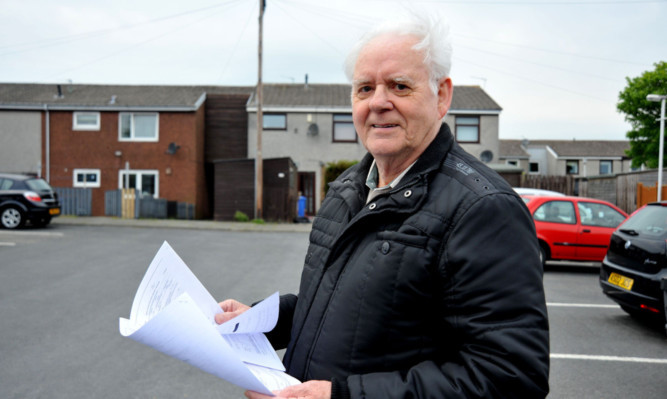A Christmas Island veteran from Fife is returning to court as he continues his efforts to establish the “true level” of radiation servicemen were exposed to while attending British nuclear tests in the 1950s.
Dave Whyte, 79, from Kirkcaldy, who is claiming for sterility and genetic damage, will attend a Freedom of Information First Tier Tribunal at a hearing in Edinburgh today.
In September 2013, Mr Whyte asked the Ministry of Defence (MoD) for the number of instruments, and their purpose, held in the bunker situated at ‘ground zero’ for the detonation of both Pennant and Burgee atomic bombs he attended in 1958.
He was finally notified in October last year that they did not have the information requested.
He told The Courier: “My first tier tribunal is in regard to my Freedom of Information questions: How many instruments were in the bunker at ground zero? What were these instruments recording/monitoring, after both Pennant and Burgee detonations? I am informed the Ministry of Defence has no information.
“The Americans awarded all their servicemen who witnessed a nuclear test $75,000 many years ago. The British Government deny there was any radiation.
“It is my belief the children of those nuclear veterans who are suffering from genetic ailments caused by radiation must be compensated.”
Mr Whyte was a young serviceman when he attended the detonations.
His task was to collect all the radioactive debris scattered around ground zero, load it into a truck and deliver it to the decontamination centre.
This took two and a half hours after each bomb and he said he was not supplied with any protective clothing or a respirator for these tasks.
He said his radiation film badges and dosimeters were handed into the decontamination centre after completion of his work.
The MoD has since denied this.
In 2013, Mr Whyte lost a war pension tribunal because he was deemed not ill enough immediately after the nuclear tests and in the decades since.
Mr Whyte, who was never told why he had a lymph node removed from his body after the nuclear tests, is claiming for sterility and genetic damage, which the Secretary of State is denying.
The MoD has said it is unable to discuss individual cases but says it recognises the “debt of gratitude” owed to servicemen and women who took part in the nuclear tests while helping to keep Britain secure at a difficult time in terms of nuclear technology.
